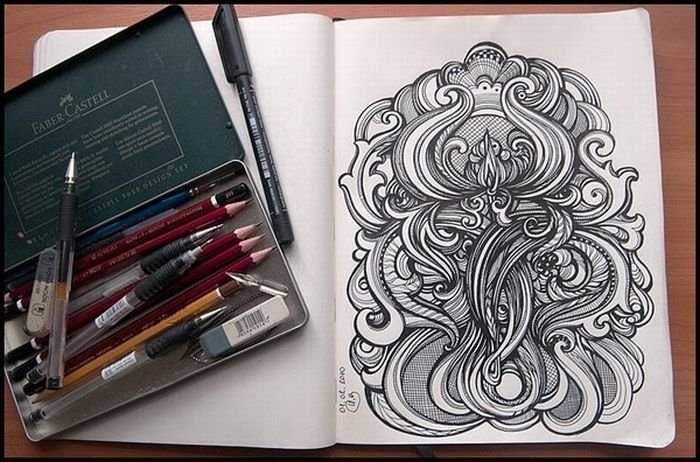Sketchbook Drawing
|
Sketchbooks come in a wide variety of shapes and sizes, with varied covers, and differing numbers of pages. Sketchbooks began as a way to provide a readily available supply of drawing paper in the convenient form of a book. Finish of the work found in the sketchbook varies widely from artist to artist, with some having very simple drawings and lots of notes, and some having highly worked images. Over time, it might allow others to see the artist's progress, as his/her style and skills develop. Many artists personalize their sketchbook by decorating the covers.
Sketchbooks made out of high quality paper, differentiated by weight (referring to density of the sheets) and tooth (also called grain), allow for a wide variety of techniques to be used, ranging from pencil drawings, to watercolor, to colored pencil, to pen and ink, and so on. Certain paper characteristics might be more desirable for use with certain mediums. Sketchbook paper also comes in a variety of tones, ranging from pure white, to yellow, and includes less common varieties, such as gray. The sketchbook is more frequently used in displays of contemporary art, as well as historical retrospectives, now that 'intimate' and 'ephemeral' records are increasingly seen by some as more informative than the planned and finished drawing, painting or sculpture. The form is also now being used as inspiration for the development of online/digital sketchbooks.
|
|















